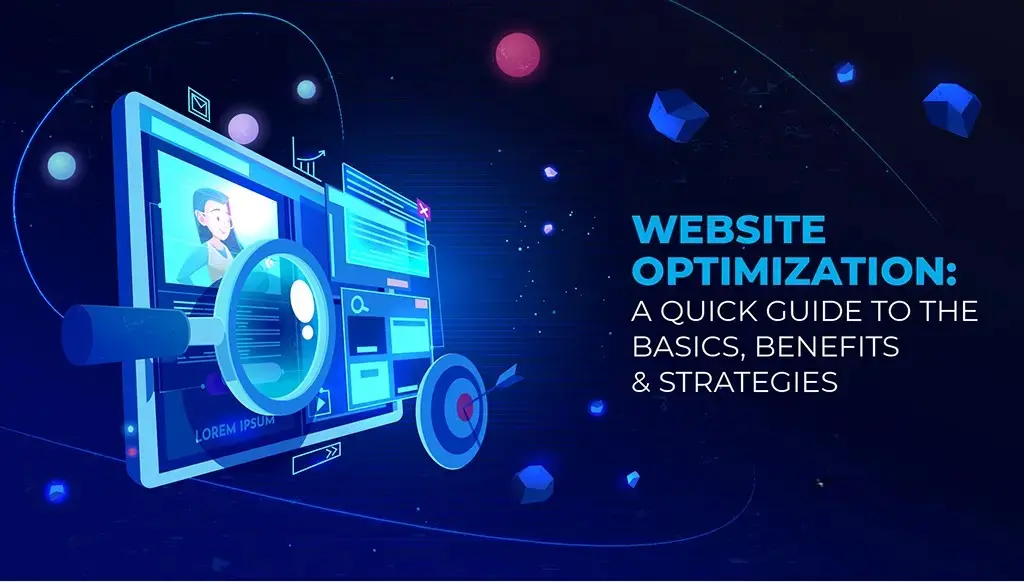
Let’s face it – we’ve all abandoned a website that took forever to load. That spinning wheel of doom? Nobody has time for that anymore. As someone who’s spent countless hours tweaking websites (and pulling my hair out over mysterious performance issues), I’ve learned that optimization isn’t just tech jargon – it’s about creating websites that people actually want to use.
What is Website Optimization?
Think of website optimization as giving your site a complete health checkup and fitness plan. It’s about making your website not just faster, but smarter and more effective at converting visitors into customers. It’s the difference between a site that makes visitors click away in frustration and one that feels effortlessly smooth.
Why Should You Care?
I learned this lesson the hard way when my own e-commerce site was hemorrhaging visitors. The culprit? A page that took 7 seconds to load. Here’s why optimization matters:
- Users are impatient creatures: Over half of mobile users will ditch your site if it takes more than 3 seconds to load. (I’m guilty of this too!)
- Google plays favorites: Search engines push faster sites to the top – it’s as simple as that.
- Money walks out the door: Every second of delay can slash your conversion rates by 7%. For a small business, that’s real money left on the table.
- First impressions stick: A clunky website screams “unprofessional” to visitors, even if your content is stellar.
- Your hosting bill will thank you: Optimized sites use fewer resources, potentially lowering your monthly costs.
Practical Steps Anyone Can Take
1. Speed Things Up
Those gorgeous, high-resolution images on your homepage? They’re probably killing your load times. I reduced my own site’s loading time by 40% just by compressing images. Try tools like TinyPNG – it’s almost magical how it shrinks file sizes without any visible quality loss.
Your code could use a diet too. Minifying CSS and JavaScript (stripping out unnecessary characters) can significantly boost performance. It sounds technical, but plugins make this surprisingly easy even for non-developers.
Set up browser caching so returning visitors don’t have to download everything again. It’s like telling their browser, “Hey, remember this stuff for next time.”
If you want to get fancy, look into a Content Delivery Network (CDN). It’s like having copies of your website stored around the world, so visitors get served from the location closest to them.
2. Don’t Forget Mobile Users
I spent weeks perfecting my website on my laptop, only to discover it was practically unusable on my phone. Don’t make my mistake. Mobile optimization is non-negotiable when more than half of web traffic comes from phones:
- Make sure your design adjusts seamlessly to different screen sizes
- Create buttons large enough for human fingers to tap without frustration
- Keep text readable without forcing people to zoom in
- Test on actual devices – what looks good in theory might fail in practice
3. Make Search Engines Happy
SEO isn’t black magic. At its core, it’s about helping search engines understand what your pages are about:
- Use keywords naturally in your content (keyword stuffing is so 2010)
- Write meta descriptions that make people want to click through
- Create URLs that humans can understand (not just strings of numbers)
- Structure your content logically with proper headings
- Label your images so search engines know what they’re looking at
4. Think About the Human Experience
A fast site that’s confusing to navigate still fails. Focus on creating an experience that feels intuitive:
- Simplify navigation – if visitors need a map to find things, you’ve already lost
- Make your call-to-action buttons impossible to miss
- Kill those annoying pop-ups that make people want to throw their devices
- Add a search function that actually works
- Design with accessibility in mind – because websites should work for everyone
How Do You Know If It’s Working?
I’m a big fan of measuring results. These tools will show you if your optimization efforts are paying off:
- Google PageSpeed Insights: Gives your site a score and specific fixes
- Google Analytics: Shows how people actually use your site
- GTmetrix: Provides detailed loading analysis with nice visual graphs
- Hotjar: Lets you watch recordings of real users navigating your site (eye-opening!)
The Never-Ending Journey
I’ve learned that website optimization isn’t something you check off your to-do list and forget about. Technology changes, user expectations evolve, and search engines update their algorithms. The sites that win are the ones that keep improving.
And remember – while speed matters, don’t sacrifice what makes your site valuable just to gain a few milliseconds. I once removed all images from a client’s site to improve speed, only to watch conversion rates plummet. The goal isn’t just a fast website – it’s a fast website that people love to use and that achieves your business goals.
Now go make your website the best version of itself!
